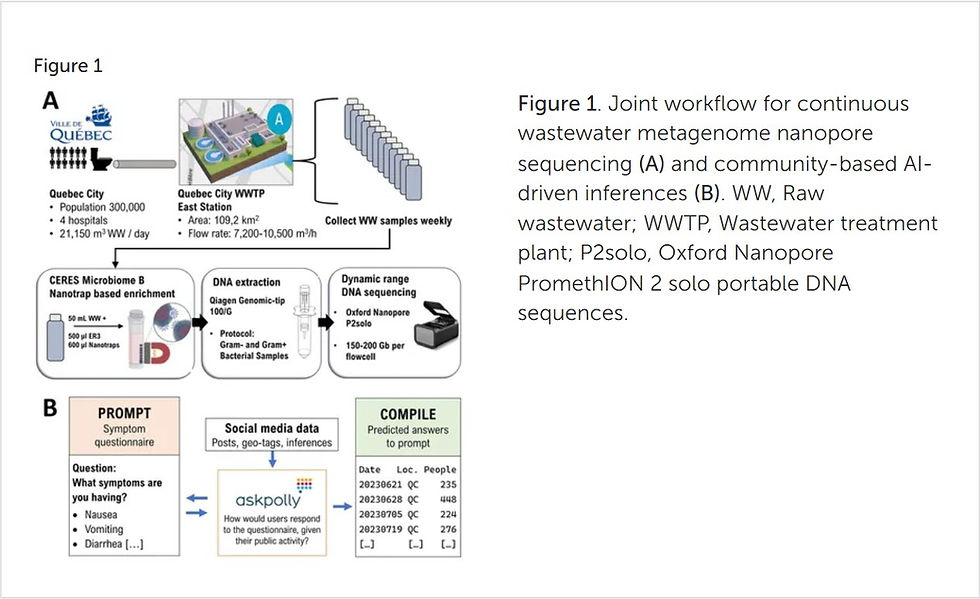Quantifying relationship of SARS-CoV-2 wastewater concentrations, building-level COVID-19 prevalence
- rdunlap
- Apr 30, 2022
- 2 min read
Updated: Sep 11, 2022
Quantifying the Relationship between SARS-CoV-2 Wastewater Concentrations and Building-Level COVID-19 Prevalence at an Isolation Residence: A Passive Sampling Approach
ABSTRACT: SARS-CoV-2 RNA loads can be detected in the excreta of individuals with COVID-19 and have demonstrated positive correlations with clinical infection trends. Consequently, wastewater-based epidemiology (WBE) approaches have been implemented globally as a public health surveillance tool to monitor community-level prevalence of infections. The majority of wastewater specimens are gathered as either composite samples via automatic samplers (autosamplers) or grab samples. However, autosamplers are expensive and can be challenging to maintain in cold weather, while grab samples are particularly susceptible to temporal variation when sampling sewage directly from complex matrices outside residential buildings. Passive sampling can provide an affordable, practical, and scalable sampling system while maintaining a reproducible SARS-CoV-2 signal. In this regard, we deployed tampons as passive samplers outside of a COVID-19 isolation unit (a segregated residence hall) at a university campus from 1 February 2021–21 May 2021. Samples (n = 64) were collected 3–5 times weekly and remained within the sewer for a median duration of 24 h. SARS-CoV-2 RNA was quantified using reverse-transcription quantitative polymerase chain reaction (RT-qPCR) targeting the N1 and N2 gene fragments. We quantified the mean viral load captured per individual and the association between the daily viral load and total persons, adjusting for covariates using multivariable models to provide a baseline estimate of viral shedding. Samples were processed through two distinct laboratory pipelines on campus, yielding highly correlated N2 concentrations. Data obtained here highlight the success of passive sampling utilizing tampons to capture SARS-CoV-2 in wastewater coming from a COVID-19 isolation residence, indicating that this method can help inform building-level public health responses.



Comments